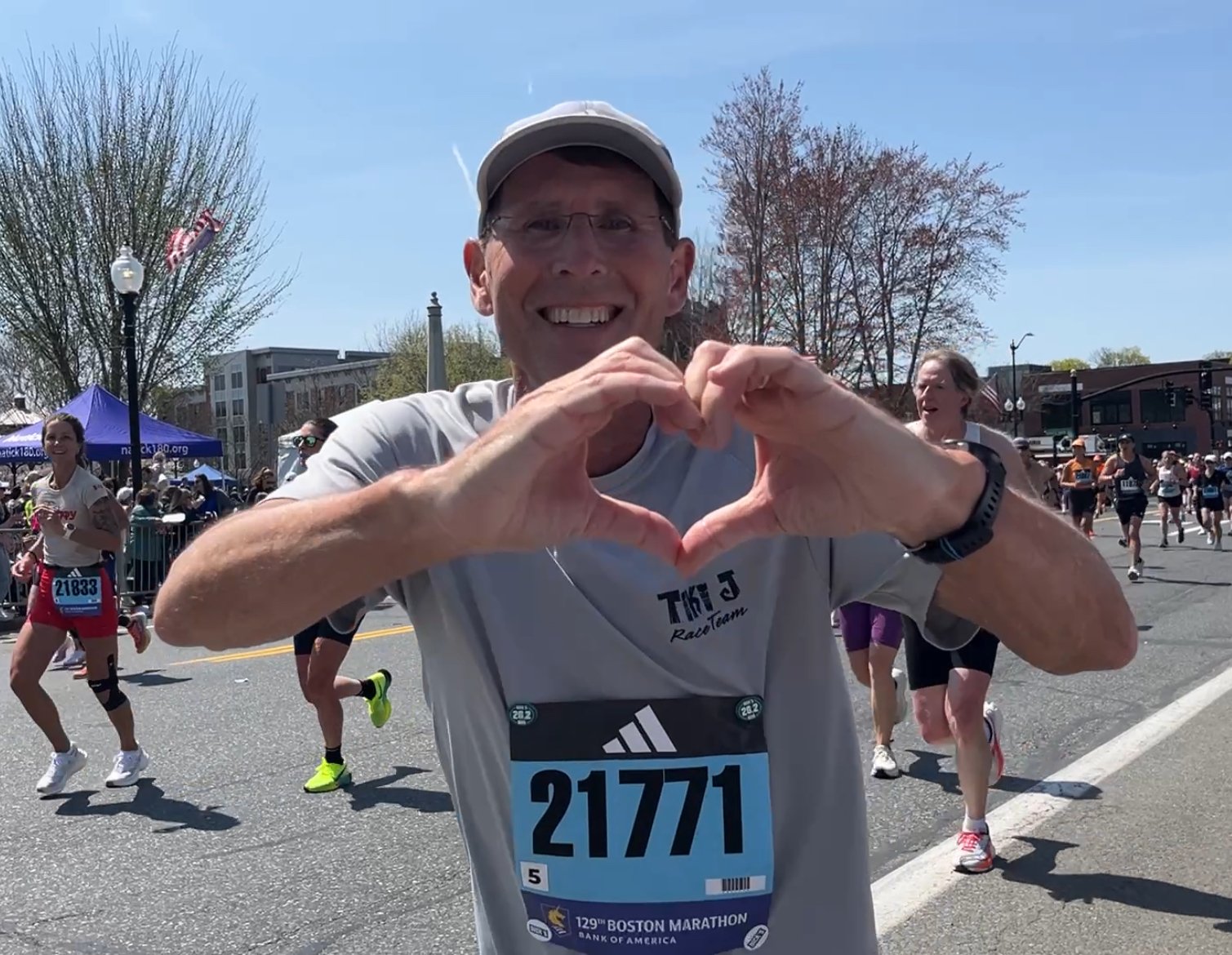BILL x BOSTON: One Hip, Two Shoes, No Problem
From Austin —> Boston
HUGE congratulations are in order for all of the Boston Marathoners this past Monday! One in particular—my client, Bill W.—crossed the finish line with an incredible time of 3:48:21. Heartbreak Hill? Please. Bill barely blinked.
Bill W. averaging 8:43 per mile at 2025 Boston Marathon
The kicker: just eight weeks ago, Bill wasn’t even sure he’d be lining up at the start. He was dealing with a hip that was anything but quiet. But with some serious commitment to rest, recovery, and actually listening to his body, we tracked down the source of the issue and got to work.
I dove into his running biomechanics to figure out where he was already crushing it and where we had room to grow. (Spoiler: there’s always room to grow.)
Not gonna lie—when a client comes to me with a high-stakes deadline like this, I have a brief internal spiral. Like, do I even know what a hip is? But after about 10 minutes of that allotted self-doubt, I remind myself who I am and why I do this work. I’m not here to magically fix everything—I’m here to walk (or run) alongside my clients. To help them tune in, not tap out. You all keep me honest.
Beyond his care at Ascent Physical Therapy, Bill also became the very first pilot participant for Fysikase’s Return to Running (RTR) program. The plan evolved week by week—responding to how his body felt, adjusting for real life (looking at you, cross-country work trips), and staying laser-focused on long-term performance.
CONGRATULATIONS, BILL! You earned every mile of that finish line moment.
Much deserved finisher medal of the 129th Boston Marathon
RTR programming will soon be available through the Fysikase website (we’re in the lab putting finishing touches on it). In the meantime, if you're looking for customized return-to-run support, reach out through the contact page. I would love to work with you.
Still Here— 24h Run
What a difference 24 hours can make.
Still Here is a 24-hour run I (Clara, Fysikase owner) am doing to raise awareness and funds for suicide prevention. This isn’t a race. It’s a reminder that life can feel heavy, that holding on isn’t always easy, and that being still here is something to be proud of. I’ve witnessed how deep the struggle can go, both in others and myself. And I know how hard it can be to keep moving when your mind is telling you to stop.
When: July 2, 2025
Where: Austin, TX
I decided to raise funds for this specific campaign because of how meaningful it is to me to still be here. As someone who has personally felt the temptation to unburden others with my life, and very deeply struggled to speak up for myself, I find it so meaningful to just talk about suicidal ideation. It’s uncomfortable to show outward signs of needing help if you’re the one who always “has it together” and people don’t feel the need to check on you. It’s not their fault— I was wearing a mask.
A little background; some of you can probably relate to heavily identifying with a sport. You grow up never feeling quite smart enough. Grades are good but there is always someone who did better. You find an athletic outlet that fulfills the empty space left over from your lack of intellectual talent. Maybe you win a few medals, get some accolades that inflate your ego just enough to make you feel this sense of false confidence. This sport becomes your identity.
Then tragedy enters the chat. You’re now in the beginning of your Odyssey.
This story outwardly looks different for all of us. And if you’re reading this post now, you or someone you know has experienced the pain that comes after the tragedy. The “lingering” as I call it. When self-isolation begins to rear its head and, on top of your current responsibilities (work, grad-school, sleep, friendships, family, religion) you are also plagued with “the lingering” effects. For me, it was PTSD that lead to frequent panic attacks. Every time I blinked I saw visual reminders and every time I closed my eyes longer than a blink I felt transported back.
To fill my shame void, I substituted with meaningless relationships, toxic food choices, avoiding conversations with loved ones, and driving around at night to find the best building in Miami to leap from.
It wasn’t until I met a very close friend in Beckley, West Virginia that I started to see a flicker of light at the end of this (going on 2 years at the time) overdue journey. I may have only known Stevie for 11 months before his passing, but the genuine love he showed me was as close as I ever felt to being seen. I started to fall in love all over again with the sport that I once had panic attacks from. I felt proud of myself. And for once, I felt like someone was proud of me.
Now, I like to believe Stevie is my guardian angel. I constantly hear his voice cheering me on when life gets tough.
So when I’m asked why I want to run for 24 hours— it isn’t just for me, a survivor. It’s for those who aren’t running with us any more, too.
About American Foundation for Suicide Prevention
Save Lives and Bring Hope to Those Affected by Suicide
AFSP is dedicated to saving lives and bringing hope to those affected by suicide. AFSP creates a culture that’s smart about mental health by engaging in the following core strategies:
Funding scientific research
Educating the public about mental health and suicide prevention
Advocating for public policies in mental health and suicide prevention
Supporting survivors of suicide loss and those affected by suicide in our mission
If you or someone you know is in a crisis, please call 1-800-273-8255 or text TALK to 741-741.



